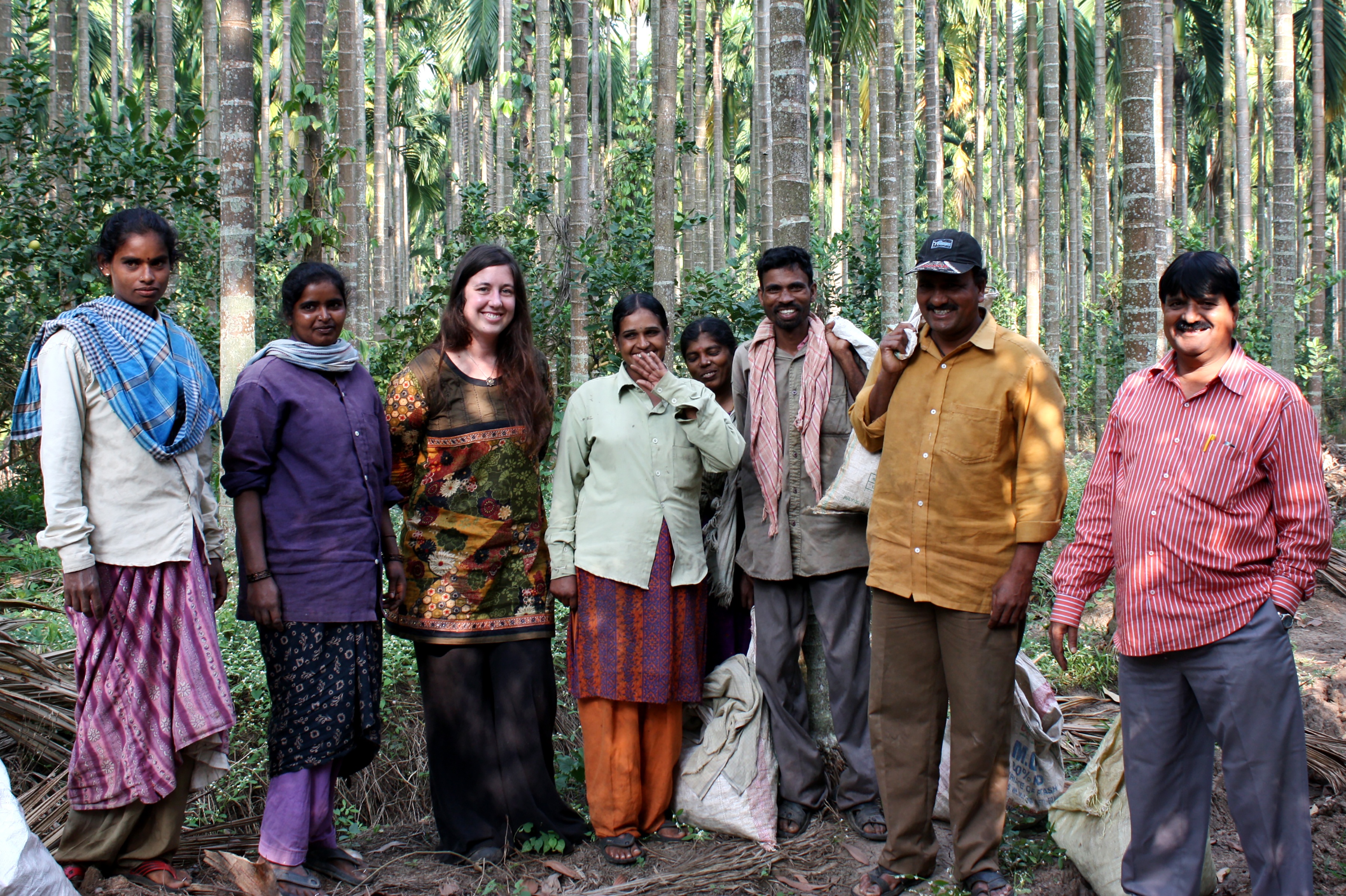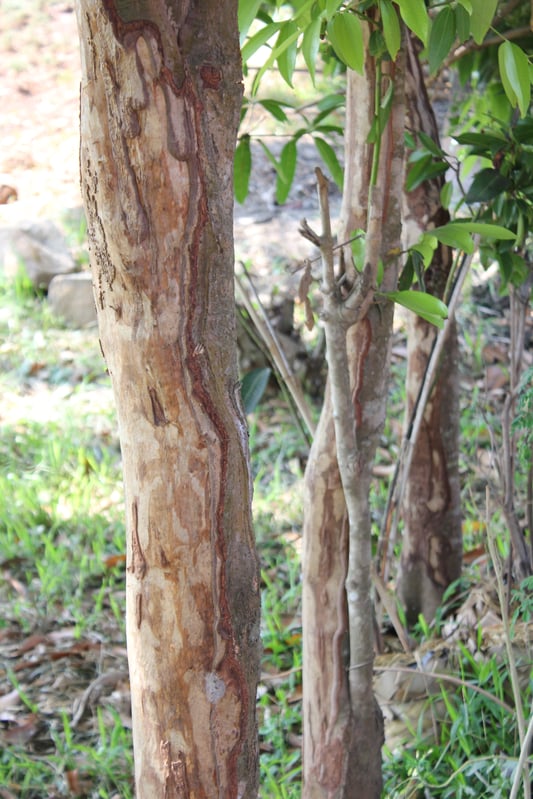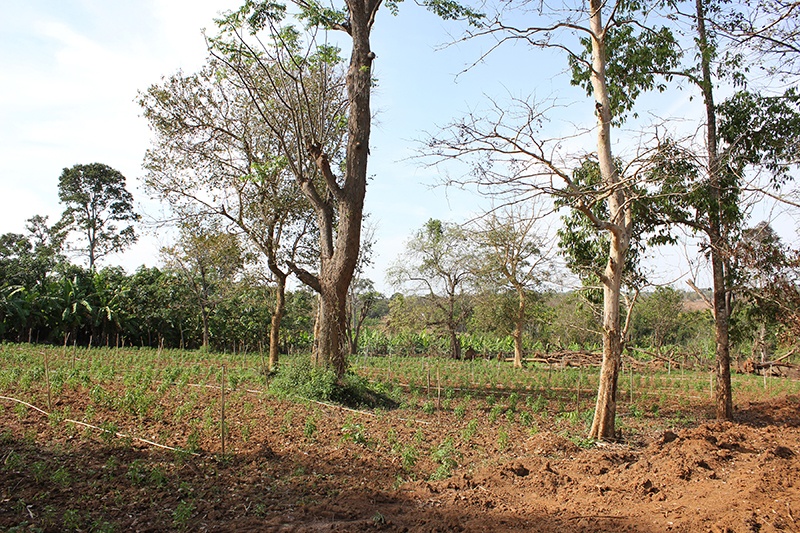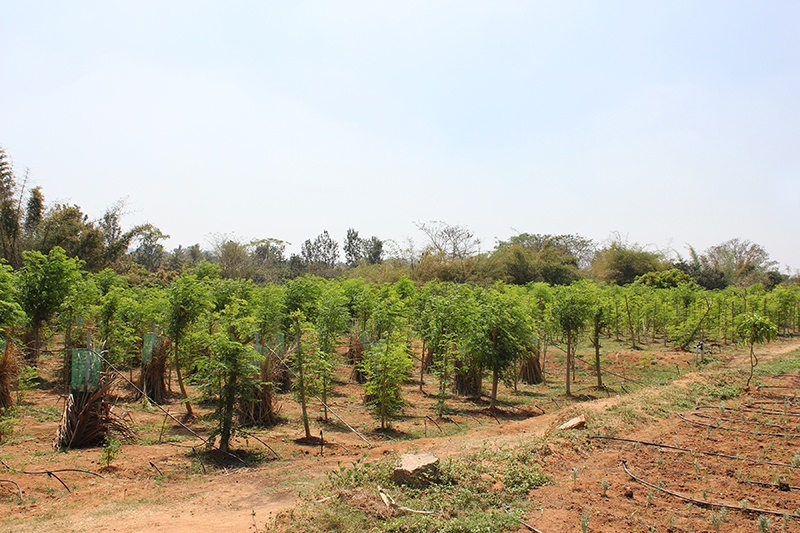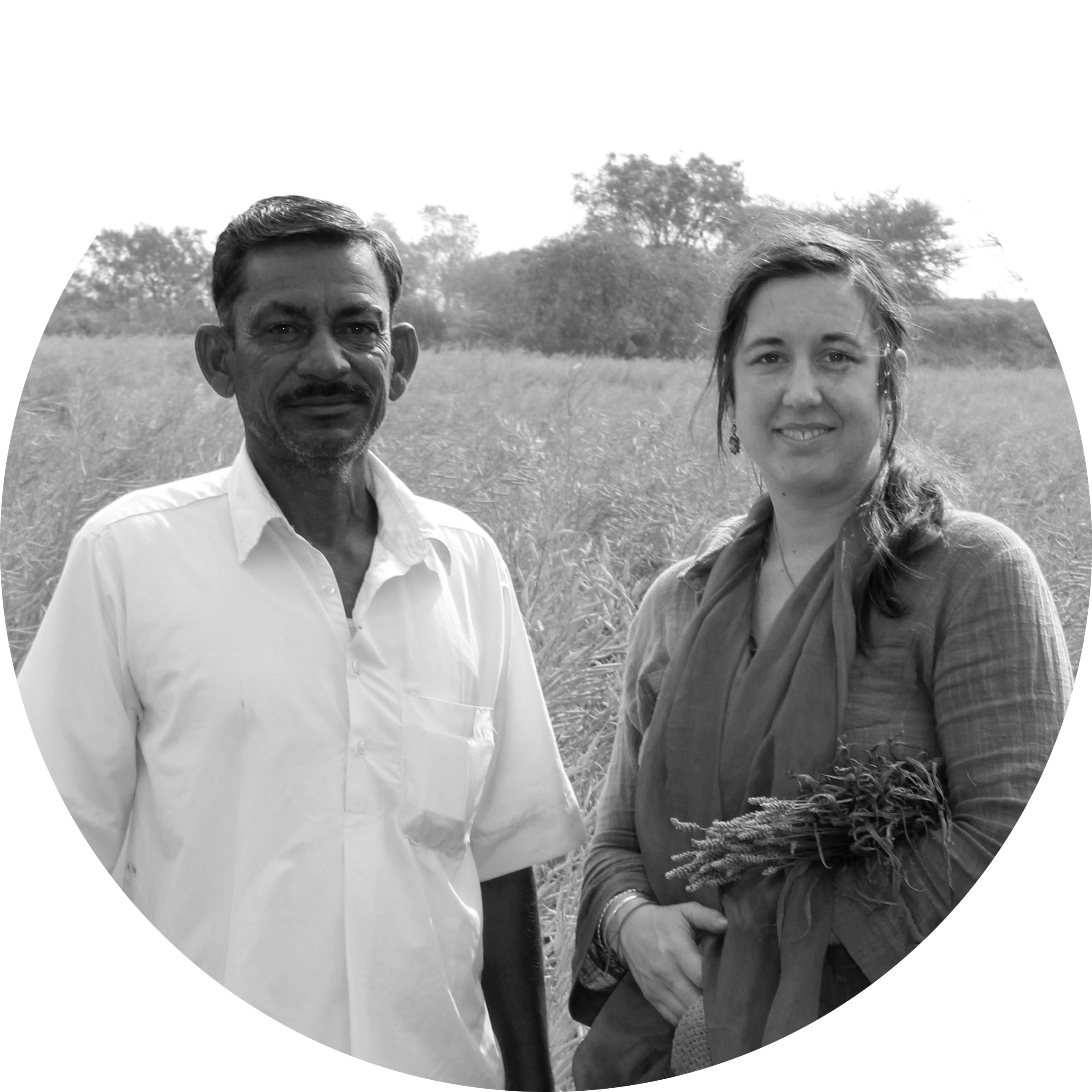Chief Operations Officer, Jennifer, visits with a group of Fair for Life farmers on this intercropped forest farm with yearround harvestability in three stories of the forest canopy.
Increasing demand for spices acquired from tree barks, such as our beloved cassia (a.k.a. cinnamon) is putting many tree species in peril worldwide. At Mountain Rose Herbs, we are passionate about supporting sustainable harvesting that preserves the life and integrity of the tree, rather than killing it. Our Fair for Life Project farmers in India use methods that are unconventional, harvesting only small sections of the tree bark and then allowing the tree to heal completely before taking more.
I was able to observe this practice firsthand on my trip to southern India, while I was visiting some of our Fair for Life Project farms, including the region where our turmeric is sourced and the groves where we get our cassia. I was particularly excited to see bark regeneration trials in action. We have been working for many years to get cassia established on these farms in order to increase diversity in the bioregion. Our involvement also allows us to oversee this spice’s sustainable harvest and to secure the desired flavor profile. This has been a successful venture, and we’re beginning to receive incredibly potent cassia from these farming projects.
Our fair trade cassia is harvested in a sustainable manner, with the tree bark given ample time to regrow before the next cutting.
Our farmers in India have been cutting bark every three months and gauging its rate of regrowth. I was able to observe harvests made over various periods of time. Within three months, the bark has reformed to a level that will protect the tree. Within one year, the bark has grown enough so that the original scraping is just a faint scar and the outer bark layer present. However, it took a full three years for the outer bark to completely regenerate to the point where the cassia could be harvested a second time.
Trees are planted among the seasonal certified organic crops on our southern Indian farms, which include botanicals such as tulsi, bird's eye chili, and ginger.
Why do we care so much about barks? The outer covering of trees—the bark—is like our skin. It works to protect the body of the tree by deterring pests such as mold, fungus, and insects. It also creates an essential epidermal layer that locks in moisture. This is an important adaptation in an arid climate like India. Luckily for us, these advanced functions of the bark can carry over to food and tonics for human consumption.
In addition to cassia (Cinnamomum sp.), another important bark from this area is arjuna (Terminalia arjuna) -- a large evergreen deciduous tree common in the plains and foothills of the Himalayas. The red inner bark is highly prized as a cardiac tonic in the Ayurvedic tradition and holds a position in Ayurveda very similar to that of hawthorn in European herbalism. Sandalwood is another key example of a valued tree bark. It’s no longer being harvested in this area due to its protected status, however, it grows native in the forests surrounding these pristine farms, and I was able to find some very old sandalwood trees while out strolling.
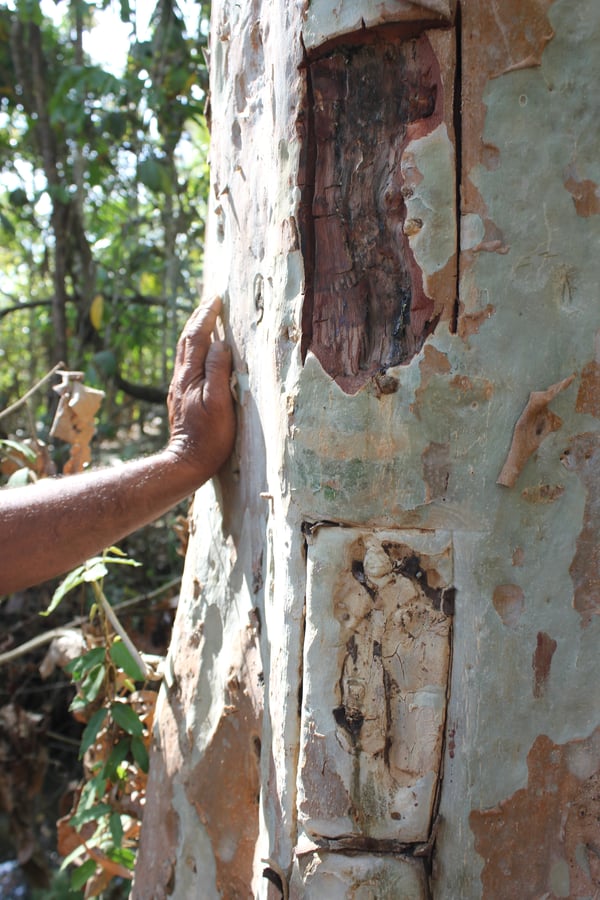
Wild, old growth arjuna trees occur naturally in the forests surrounding this organic farm. The bark is harvested sustainably, with precaution taken to allow necessary time for the bark to regenerate.
Because of the success of this project and its innovative farming methods, we have a transparent system. We’re working alongside the growers who are evaluating this crucial data daily. We're able to procure our material in a systematic and structured manner that allows for optimal harvest techniques and ongoing stewardship of these beautiful trees.
Also, we’re able to identify the species of the trees, ensuring that what our customers receive on their doorstep is what they intended to buy. For example, with arjuna there are 18 other tree types being erroneously sold on the market. Proper identification is critical for us at Mountain Rose Herbs, and the process of correct identification begins at the source.
This practice, coupled with our Fair for Life Project saplings, enables us to expand the array of trees growing in and around the farming regions of the Mountain Rose Herbs Fair for Life Project in India.
Read the final Chapter in Fair for life journey across india:
Here's How We're Helping to Ensure a Fair Trade Future in India
You may also enjoy:
Certified moringa tree seedlings as far as the eye can see.

